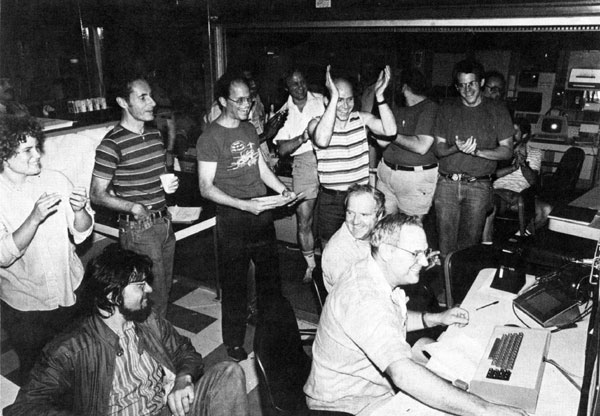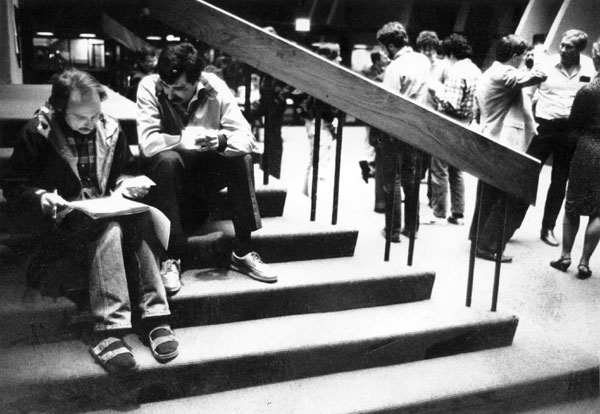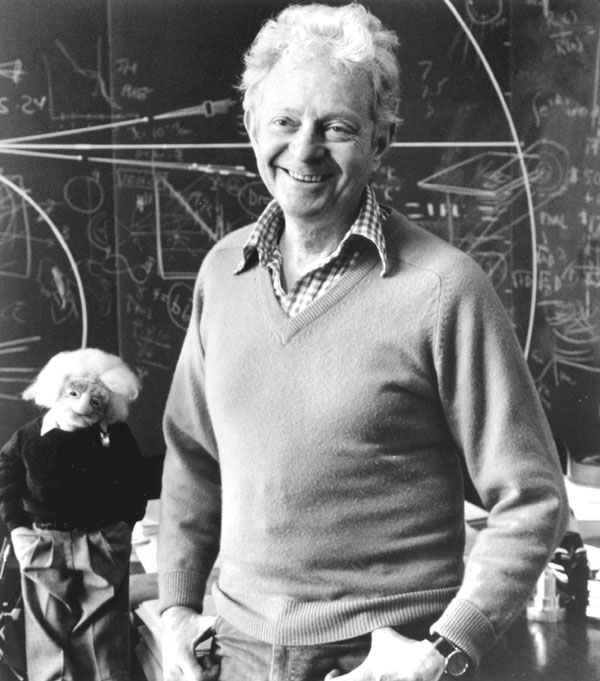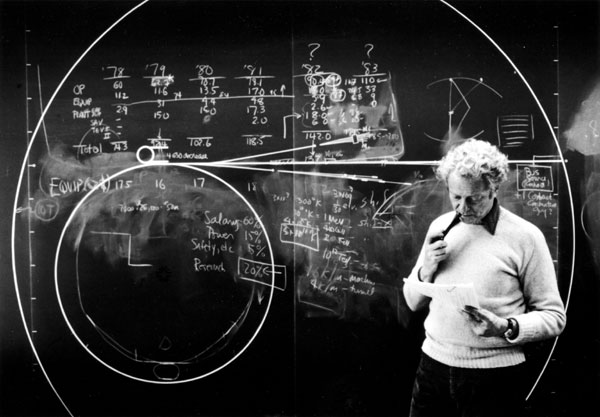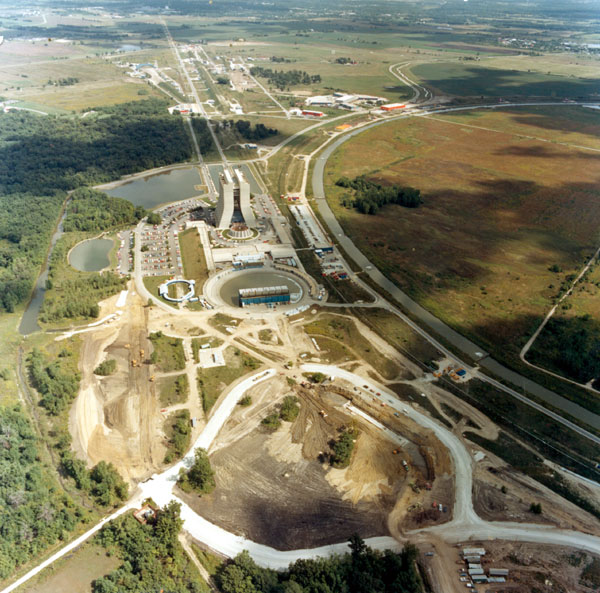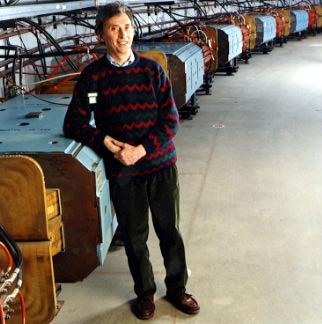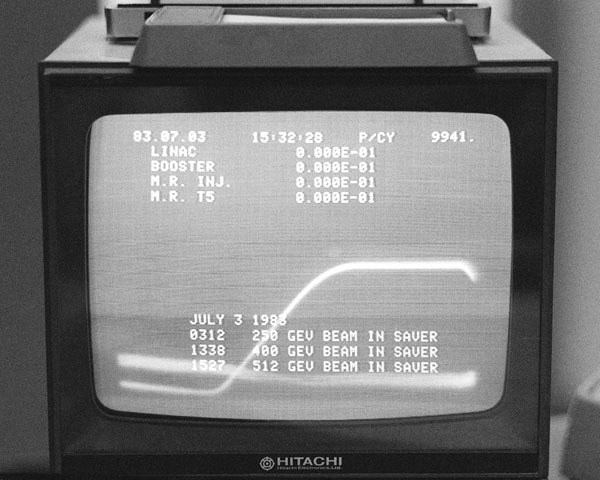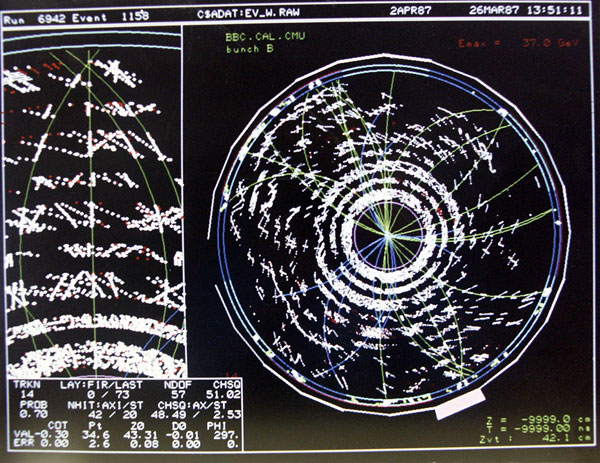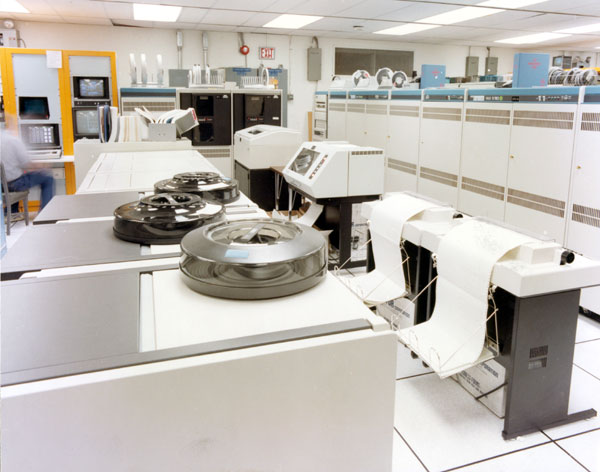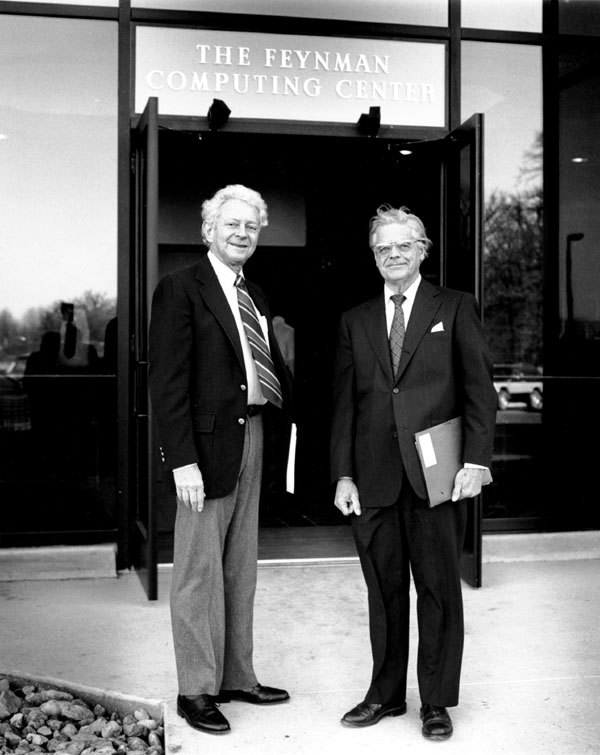The Lederman Era
IV. The Lederman Era
Lederman weighed the possibilities of the Laboratory's future in light of the research capabilities at other laboratories. He reaffirmed the central direction that the Laboratory had undertaken to complete the first superconducting accelerator and to transform that accelerator into a proton-antiproton collider. He decided to continue the pursuit of the high-energy frontier with the Energy Doubler/Saver knowing that, once completed, many opportunities for new explorations would become possible.
Indeed, a new scheme for colliding beams of protons and antiprotons had become an option in addition to the higher energy fixed target experiments for the Fermilab research program. Construction of an Antiproton Source was essential to produce the proton's opposite particle. These antiprotons could then be steered into collision with protons and observed in specially designed detectors. The energy of these collisions would be close to 2 TeV in the center of mass. This technically risky project, employing stochastic cooling techniques, was approved in 1982 and was led by John Peoples.
The superconducting Tevatron was the biggest innovation in international accelerator technology and by July 1983 the particle beam reached 512 GeV. That summer 10,000 neighbors attended an Open House at Fermilab to celebrate the milestone and learn more about our frontiers in science.
Pushing the frontiers of knowledge onward, Fermilab's particle theorists help integrate the massive amounts of data produced by the experiments and provided direction for future experiments. Deep connections between the inner space of this experimental high-energy physics research and the outer space of our universe prompted Lederman to form a partnership with NASA in 1983. The Theoretical Astrophysics Group, the first such group formed at a national laboratory, links the data from the Tevatron's particle collisions with physical conditions not present since the beginning of the universe, the Big Bang.
Through the 1980s the computing technology and power of Fermilab experienced a revolution. Where once small independent consoles with oscilloscopes monitored the accelerator's beam and photographs from the bubble chamber were inspected for unusual occurances, a major effort was launched in this decade to put high performance computing to work to improve our methods of observation and understanding.
In 1985 the beam reached 800 GeV and the first collisions of protons and antiprotons (combined energy of 1.6 TeV) were observed at the Colliding Detector at Fermilab (CDF) in October. The beam energy rose to 900 GeV in 1986. The physicists who led the Tevatron project, Helen Edwards, Richard Lundy, J. Richie Orr, and Alvin Tollestrup were awarded the National Medal of Technology in a ceremony at the White House in 1989.
Equipped with the highest energy, most powerful superconducting accelerator in the world the search began for the most exotic particle within reach: the top quark. Two specialized detectors were constructed by large teams of experimenters at CDF and at DZero. As plans progressed for the analysis of unprecedented kinds and amounts of data from the collisions it became apparent that greater computing strength was necessary to track the events and sort out the rare from the common. Another frontier was on the horizon.
As more information about the collisions became crucial, computers could be programmed to search for the new clues and track only the unique events desired. With the introduction of the Advanced Computer Project (ACP) and its ability to coordinate Fermilab's collision data with analysis by computers we entered a new domain of rapid data acquisition. During the observance of Fermilab's 20th anniversary in 1988 the Feynman Computing Center was dedicated.
Also in 1989 the careful treatment of our natural setting from the Laboratory's founding to the present brought distinction to Fermilab as a Department of Energy National Environmental Research Park. Our open grounds are home to many species of vegetation and wildlife and provide a favorable habitat for their propagation. As the prairie flourishes we are reminded of our legacy of the land.
